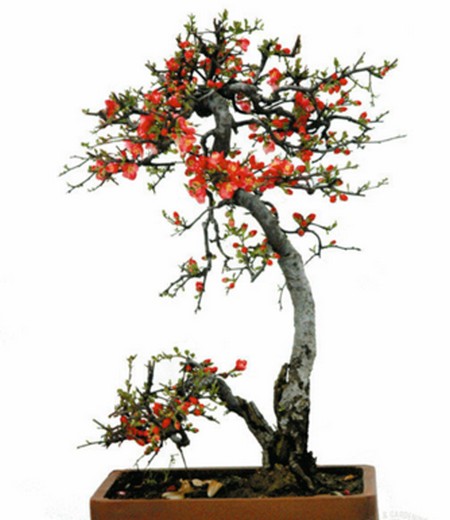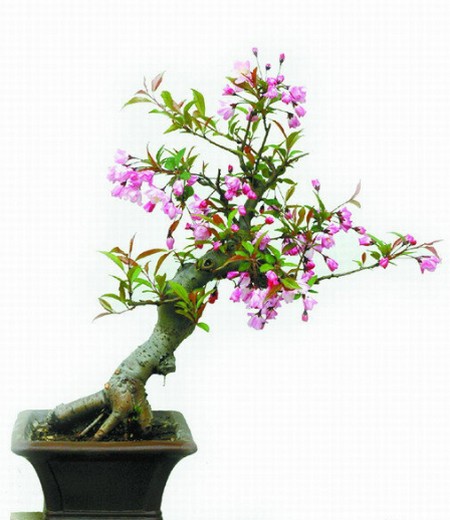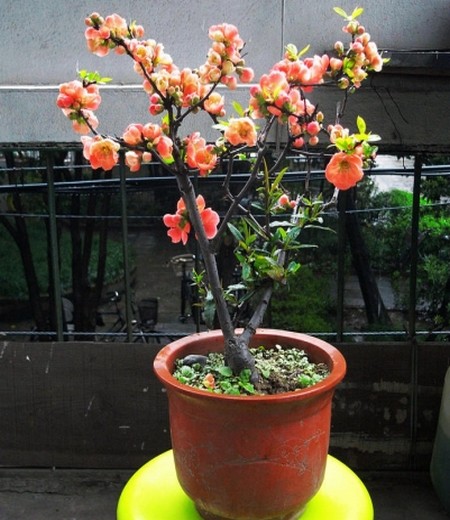Production technology of bonsai of begonia in Xifu
Xifu Begonia is light-loving, cold-resistant, drought-resistant, and avoid dampness. It grows well in the dry areas of the north. Generally multi-row ground planting, but you can also make pile scenery to implement potted plants. The suitable planting period is before sprouting in early spring or after defoliation in early winter. When the seedling comes out of the nursery, keeping the intact root system of the seedling is one of the keys to the survival of planting. Generally, large seedlings should be planted with soil balls, and small seedlings should stay in the lodging soil according to the situation.

After planting begonia seedlings, the tending management should be strengthened and the soil should be kept loose and fertile. A batch of pond mud or fertile soil can be cultivated in the rhizosphere every autumn and winter. A pruning was carried out from the defoliation to the sprouting in early spring to cut off the weak branches, disease and insect branches in order to keep the crown open, ventilated and transparent. In order to promote the vigorous flowering of the plant, it is necessary to truncate the overgrown branches to reduce the nutrient consumption of germination, so that the remaining axillary buds can get more nutrients and form more flowering and fruiting branches. Fruit branches and middle branches need not be pruned. During the growth period, if the heart can be removed in time and the vegetative growth is restricted in the early stage, the effect will be more significant. The pile scenery of potted plants should be controlled in this way.
Pile landscape potted plants, derived from wild old stumps, are dug before sprouting in spring. For some species with deep taproot, the overlong taproot should be cut off in time after excavation. Tree stumps should take good lodging soil, protect roots and moisturize their roots. for example, for long-distance transportation, they should pay special attention to moisturizing the roots to prevent them from losing water and affecting their survival. After 1-2 years of embryo culture, after the stump is initially formed, it can be put on the pot before the Qingming Festival. Shallow pots should be used to cultivate pile scenes. At the beginning of planting, the root should be filled with more soil, and then gradually raised the root, coupled with fist stone, will become a mountain and wild Begonia pile scene.
The pile scene of the new basin will have to be shaded for a period of time before it can be transferred to normal management. In order to make the pile scenery flowers fruitful, the management of water and fertilizer should be strengthened. The mixed fertilizer of phosphorus and nitrogen should be applied 1-2 times before flowering, and the thin phosphorus and potassium fertilizer should be applied every half a month after flowering to promote the fullness of fruit and reduce fruit drop.
The styling and processing of Xifu begonia is often combined with pruning, and the processing period is from defoliation in winter to before sprouting in spring. During the period of Meiyu, the growth of new branches is more mature, and the branches are more elastic, so they are also suitable for pruning and processing. 2-year-old 3-year-old seedlings can be processed, at this time the plasticity is large, and the operation is easy. It is better to use brown wire and metal wire at the same time, the trunk and big branches need to be properly tied, and all the twigs should be trimmed. The branches and leaves should be trimmed into a natural crown and should not be tied up too regularly.
Western begonia grows fast, so brown wire and metal wire should be removed in time to prevent damage to trees. It can be processed into oblique dry type, curved dry type, waterfront type, cliff type, double dry type, multi-dry type and so on. Western begonia has strong germination and fast growth. Attention should be paid to plastic surgery and pruning. After falling leaves in winter to before sprouting in spring, disorderly branches such as withered branches, disease and insect branches, thin and weak branches, crossed branches, overlapping branches and over-dense branches can be cut off. After blooming in spring, we can truncate the overlong branches appropriately according to the modeling needs, promote the division of lateral branches, increase the number of flower buds, and ensure that there are many flowers in the coming year. In addition, after sprouting in spring, too many bud heads that are too dense and poorly positioned can be erased.
Crabapple blossoms once a year in spring, such as cooling, reducing water, shading and other methods, can make it blossom again in the autumn of the year. Specific method: in early July, the potted crabapple trees were moved to the shady place to cool down, reduce the light and control watering. Watering should be slowly reduced to make the leaves of the plant yellow and fall off on its own, so as to promote its dormancy. Then continue a small amount of watering in order to maintain life and not sprout new buds. In this way, after a dormant period of 35-45 days, the plant was placed in full light, watered and fertilized with liquid fertilizer to awaken and sprout new buds (leaf buds and flower buds). After another 5-7 days, you can see the bright crabapple flowers.
In addition, we can also make use of the temperature-sensitive habit of its bud to use the method of heating to promote flowering in the middle of winter, move the potted begonia pile scene into the sunny part of the greenhouse, pour water thoroughly, add liquid fertilizer, and then spray water on the plant branches every day to keep the room temperature at 20-25 ℃. After 30-40 days, it can also blossom, which can be used for New Year's Day or Spring Festival decoration. Water raises big branches and cut flowers, which can also be promoted in the greenhouse. It can be raised in batches throughout the winter and can be used whenever it is opened.
Time: 2019-05-26 Click:
- Prev

The method of making bonsai of crabapple with vertical silk
The flowering period of Begonia is after plum blossom. The pink flowers are luxuriant and beautiful, especially the budding red buds, hanging on the silky stalk elegant in the wind, graceful and moving. With rose-red petals and delicate red flowers, they are very popular woody flowers in the courtyard.
- Next

The method of making bonsai of Begonia with stick stem
Paste stem begonia as a unique ornamental tree, embellished in the gardens and green space, a little red in the grass, it is probably such a beautiful scenery. It is colorful, let people never get tired of watching, but also enjoy it, its bonsai is usually placed in halls and leisure places
Related
- Fuxing push coffee new agricultural production and marketing class: lack of small-scale processing plants
- Jujube rice field leisure farm deep ploughing Yilan for five years to create a space for organic food and play
- Nongyu Farm-A trial of organic papaya for brave women with advanced technology
- Four points for attention in the prevention and control of diseases and insect pests of edible fungi
- How to add nutrient solution to Edible Fungi
- Is there any good way to control edible fungus mites?
- Open Inoculation Technology of Edible Fungi
- Is there any clever way to use fertilizer for edible fungus in winter?
- What agents are used to kill the pathogens of edible fungi in the mushroom shed?
- Rapid drying of Edible Fungi

